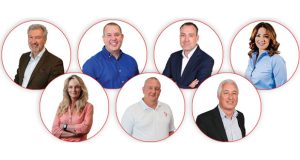Esther Coleman, Product Manager at Idox explains why facilities managers need to harness the power of a CAFM system that enables them to enjoy the flexibility of hybrid working for themselves while delivering a great working environment for the business
Nearly two-thirds (64 per cent) of hybrid workers claim that flexibility has improved their physical health. But do facilities managers feel the same? For those still required to work in the office every day using spreadsheets and paper-based information, hybrid working has just added to the workload, from managing an increasingly mobile equipment estate to redesigning office space.
With hot desking and flexible working options, facilities managers have to cope with office spaces that may be over-subscribed one day and empty the next. They need to oversee the management, maintenance and servicing of assets and equipment that have, by default, become far more mobile. That means more compliance risks, especially when end users fail to bring equipment in for testing. It also means preventative maintenance strategies can be compromised because ascertaining the location of equipment can be more challenging.
Facilities managers are on the front line when it comes to understanding how buildings are used – and the associated costs. With open-plan offices and meeting rooms, traditionally it has been relatively straightforward to map employee numbers to space requirements. But with changing employee expectations and the rising costs experienced over the past year, businesses are looking closely at options for downsizing. They are also looking to redesign office layouts to improve productivity when people are in the office. If and when opportunities for lease renegotiation arise, how much space does the organisation require and in what configuration? Could space be sublet or divested altogether?
EMPOWERING FLEXIBLE FM
A CAFM system gives facilities managers anytime, anywhere access to all the information they need. They can log in from any device at any time, meaning they can work from home or office and still have access to all the information they require day-to-day. Service managers using a CAFM Help Desk can remotely schedule engineers on-site. They can respond to end-user logs of equipment failure. Engineers using a mobile-enabled CAFM system can update information on-site, providing accurate, immediate information about the status of a work order. With information automatically updating the dashboards everyone involved is kept in the loop with accurate, timely information.
And it is easy to achieve. Web-based access to CAFM streamlines the whole adoption process – especially if a company opts for a hosted solution. There is no complex IT system involvement; asset and equipment data can be captured in a spreadsheet and uploaded into the system. And, with a dedicated implementation team on hand to help at every step, the evolution to hybrid working for facilities managers is quick and easy to achieve.
EFFICIENT HYBRID OPERATIONS
CAFM also provides the detailed, accurate and up-to-date information required to support complex decision-making about a hybrid working environment. This includes room booking and desk booking systems, which not only enables employees to seamlessly manage their hybrid working experience, but also shows how the business is utilising space and provides insight to support strategic decisions. How popular is hot desking? Does the business need more break-out spaces?
Plus, with an eye on both costs and sustainability objectives, it helps to identify if there is an opportunity to reduce the heat or power consumption in certain areas on less busy days, or perhaps only offer hot desks in one part of the building. With diagrams that show exactly how the space has been laid out, a CAFM solution provides facilities managers with a complete and accurate view of the current set-up, helping to make important decisions about the optimal strategy for the future.
OPTIMISING EQUIPMENT UTILISATION
Access to a complete database of all equipment, location and service history means a facilities manager can see any changes to the way equipment is used – and whether that impacts service schedules. While some schedules are dictated solely by compliance requirements, others can be optimised based on usage levels. CAFM can help to identify opportunities to extend service schedules, reduce costs and release engineers and subcontractors to concentrate on other key areas of asset management.
Plus, with equipment such as laptops increasingly used at home, it provides a way to ensure end users know when their devices are due for inspection and enables the completion of risk assessments. With multiple data points that can be used to customise parameters to reflect specific needs and Key Performance Indicators, a CAFM’s dashboard can provide facilities managers with full visibility of the status of their asset portfolio wherever it is located.
CONCLUSION
Hybrid working is here to stay. Under the Flexible Working Bill, employees now have the right to request flexible working from day one of a new job. Ensuring FMs, engineering managers and service desk managers have easy, remote access to accurate up-to-date information will not only meet the business’ need to create the right working environment for all employees but also ensure the facilities management team has the information to support the new operational demands created by a hybrid workforce.





